Galleries
PULSE and SCOPE Fairs Slam Selfie Culture with Hello Kitties and Neon Signs
Narcissism is a hot topic at these satellite fairs.
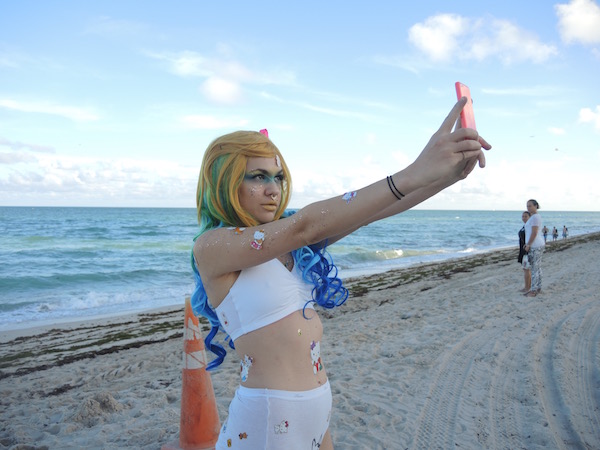
Narcissism is a hot topic at these satellite fairs.

Sarah Cascone

If it wasn’t already apparent, we are at full selfie-saturation as a culture. Luckily, we can rely on artists for increasingly sophisticated critiques of the practice, as seen at the opening of both PULSE and SCOPE art fairs in Miami Beach on Tuesday, December 1.
Los Angeles-based performance artist Kate Durbin stole the show at PULSE with the latest edition of her performance Hello Selfie, in which women wearing only Hello Kitty stickers and their underwear obliviously photograph themselves in public places. For the New York edition, the women had a sad, goth vibe, but it was all colorful mermaid kitties for Miami.
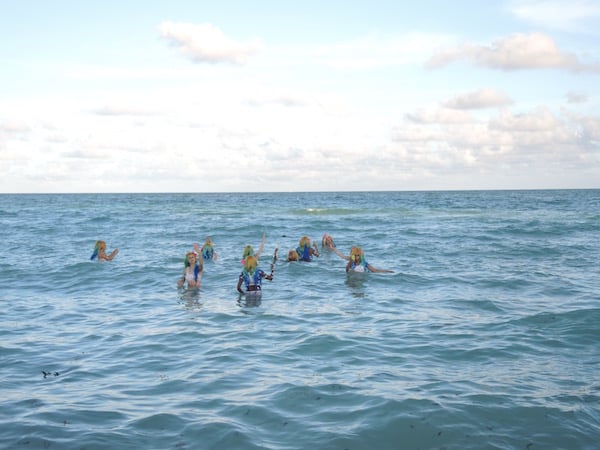
Kate Durbin, Hello Selfie, a performance at PULSE Miami Beach.
Photo: Sarah Cascone.
“The selfie is pretty important to how women frame themselves and present themselves,” Kelani Nichole of New York’s Transfer gallery, who was showing the piece, told artnet News.
The rainbow-wigged performers, armed with selfie sticks, were attracting plenty of attention with their kissy faces and extravagant poses, but had been instructed not to interact with fairgoers.
“You don’t know whether you should selfie bomb or not!” PULSE director Helen Toomer noted as the kitties prepared to head down to the beach for the performance’s finale.
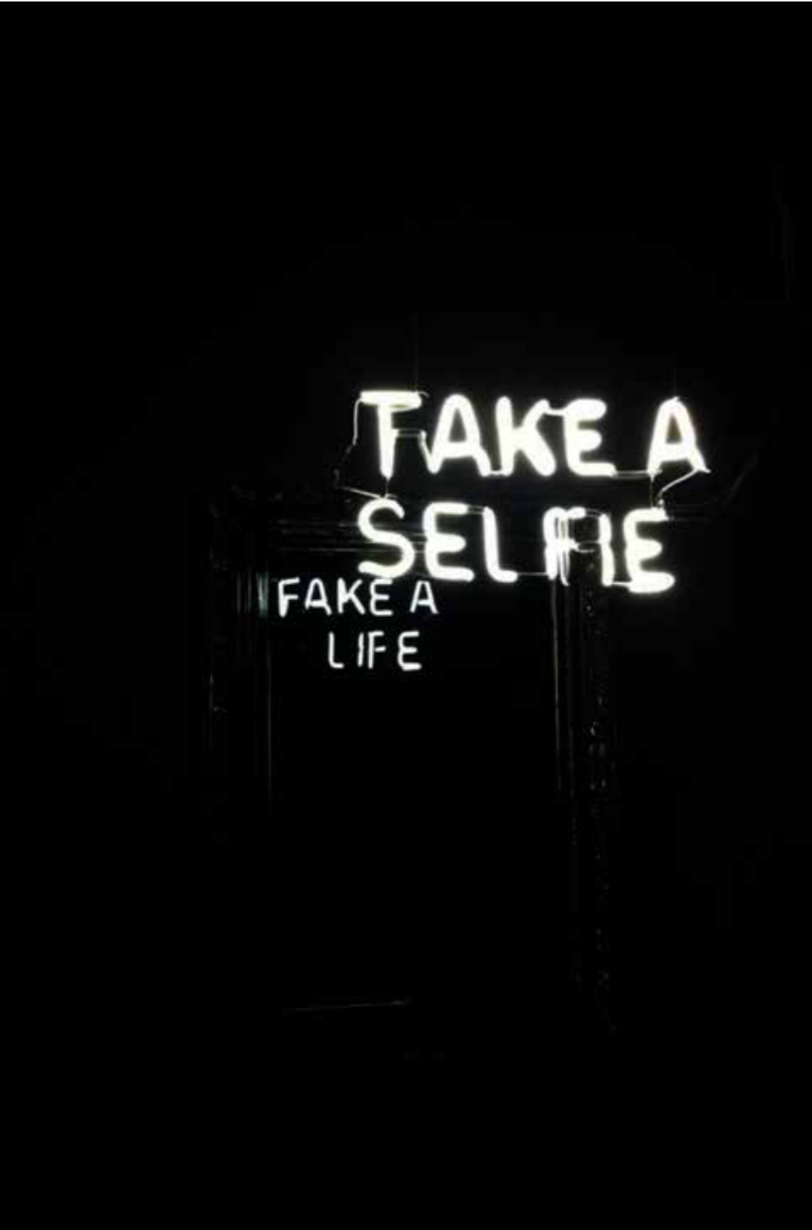
Camilo Matiz, Take a Selfie, “Here Not Here” (2015).
Photo: courtesy Indiana Bond.
At IndianBond at SCOPE, Colombian artist Camilo Matiz has inviting, Instagram-ready installations of neon signs hanging in front of ornate mirrors. When one peers into the frame, a second message on the back of the sign is suddenly revealed—what once said “Take a Selfie,” now reads “Fake a Life.”
“It’s about the duality of the human being,” gallery owner Christopher Paschall told artnet News of the contradictory messages, which also included “You Are a Star/You Bastard” and “Believe You Can/Lie to Yourself.”
“In six months you’re gonna see a Russian artist, a Chinese artist, and a Korean artist doing this,” he promised, noting that Matiz had found a way to add a second layer of meaning to catchily-sloganed neon signs.
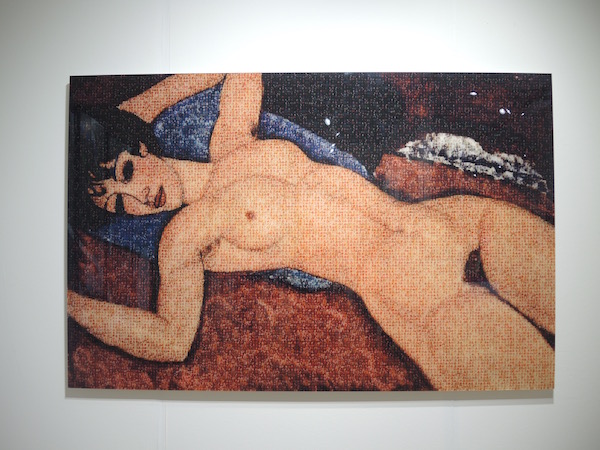
Soraya Doolbaz’s version of Amedeo Modigliani’s Nu Couché (Reclining Nude), a mosaic of photos of penises in costume as political figures.
Photo: Sarah Cascone.
Also quick to catch the eye at SCOPE was Soraya Doolbaz‘s striking mosaic of tiny photographs arranged to create Amedeo Modigliani‘s newly-infamous Nu Couché (Reclining Nude), 1917–18, the striking reclining female nude and star of the world’s second-most expensive painting after the auction where it sold for $170 million at Christie’s New York this past month.
Where the original work is a glorification of a woman’s body, Doolbaz, showing at Brussel’s Vogelsang Gallery, has inverted the male gaze by recreating the canvas using lots and lots of pictures of penises, each one dressed up in costume as “Fidel Cockstroke,” “Kim Dong Un,” “Vladimir Forskinski,” and other characters.
The gallery was also showing a unique collage work by Frank Stella, who is currently the subject of a major retrospective at the Whitney Museum of American Art. According to gallery owner Gregoire Vogelsang, Contemporary Istanbul had already put in an option to buy two works by the artist.
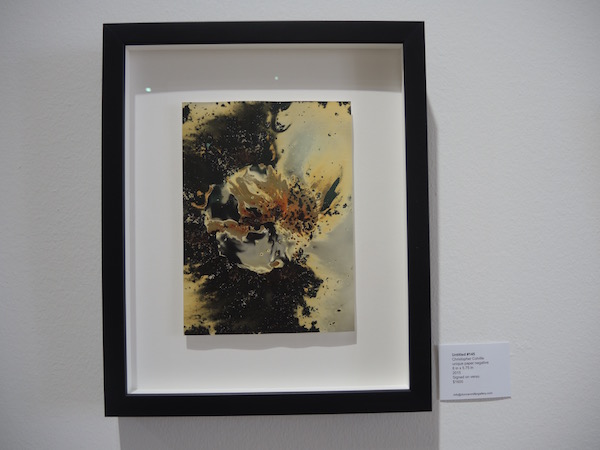
Christopher Colville, Untitled #145.
Photo: Sarah Cascone.
Other highlights included artist CJ Hendry‘s insanely detailed ink drawings in a box at the booth of Australia’s the Cool Hunter gallery; Irene Mamiye‘s pointed videos imagining the destruction of iconic pop works at Asterisk Projects; and Christopher Colville‘s subtle photographic works at Santa Monica’s Duncan Miller Gallery, created by igniting gunpowder and magnesium flash powder (an ode to the early history of photography) on photographic paper.
“We win the award for the smallest pieces in Miami,” joked Duncan Miller of the works, which the artist creates on moonless nights in the desert. He estimated that only about three or four percent of Colville’s experiments become successful works.
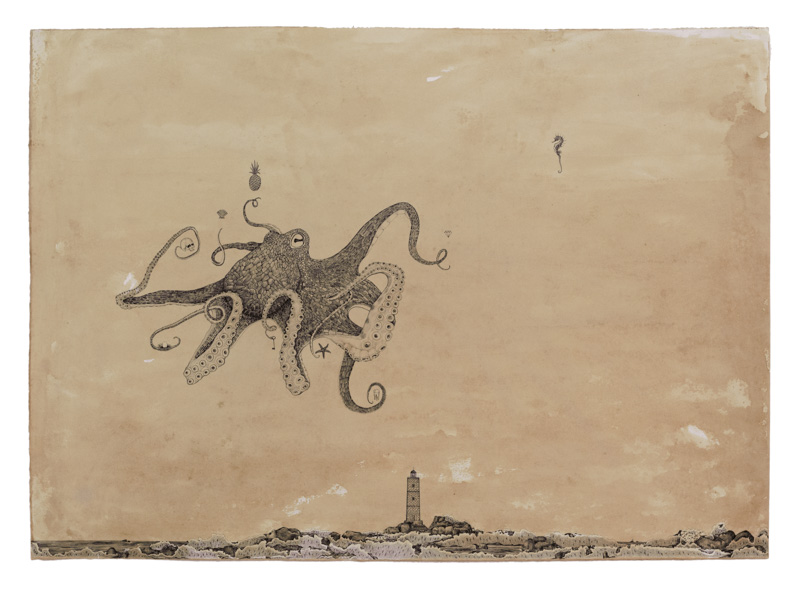
Andrea Collesano, Aspectu Disegno a china su carta anticata.
Photo: courtesy Barbara Paci Art Gallery.
At Barbara Paci, Italy’s Andrea Collesano is showing his “Seven Seas” series of beautifully-detailed drawings on tea-aged paper, featuring underwater animals floating in space.
We also enjoyed Michele Mariaud gallery, which is showing Transformer-like photo collages of famous buildings by Joel Kuntz, and a chilling take on the trophy wife by Corinne Mariaud, featuring photos women’s heads mounted like prized hunting kills.
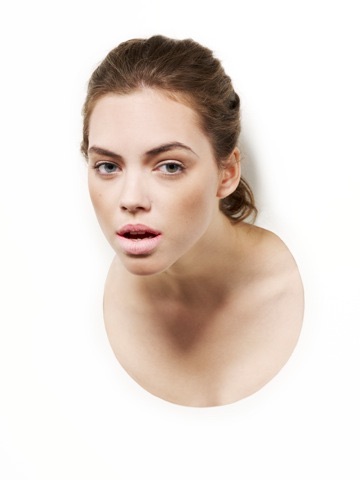
Corinne Mariaud, from the series “Trophees.”
Photo: courtesy Michele Mariaud Gallery.
A special installation by Aerosyn-Lex Mestrovic is also worth a look. The Brooklyn-based designer and artist, known for his intricate calligraphy, has created a new body of cast paper work for MOO, a business paper supply company. The life-size human sculptures each contain MOO’s new digital paper near field communication technology, which will direct Verizon and Android users to Mestrovic’s website, which he will be updating daily during the fair with new work.
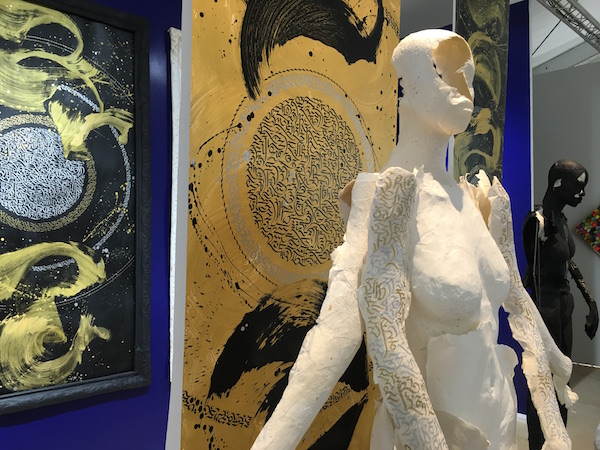
Aerosyn-Lex Mestrovic for Moo at SCOPE.
Photo: courtesy Moo.
More old school paper work is on view, including Suh Jeong Min‘s 3-D paper works at JanKossen Contemporary gallery. Suh collects the paper prayers given to supplicants at Buddhist temples, binding them together and slicing away to create delicately layered sticks.
“At the end of the day, the daily worries and burdens are what we share,” gallerist Jasmin Kossenjans told artnet News of the work, which speaks to the near-universal need for spiritual guidance and advice.
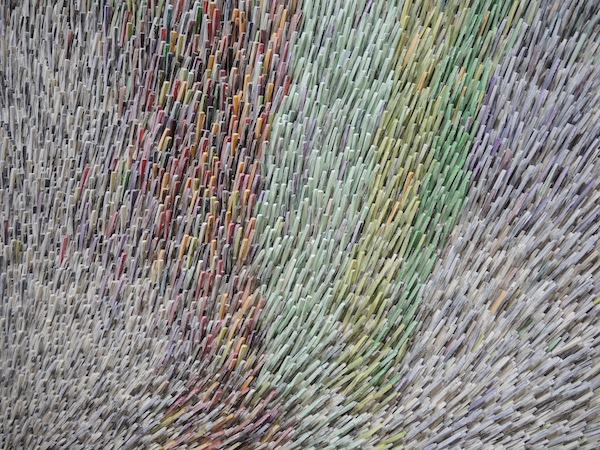
A detail of a work by Suh Jeong Min.
Photo: Sarah Cascone.
Back at PULSE, Durbin’s roving performance was joined by a strong slate of work that included a booth from Visual AIDS, which was celebrating a Day Without Art with the sale of benefit prints by Deborah Kass, Tony Feher, and Philip Taaffe. John Hanning will be on hand throughout the fair to sign free artworks that are available for fairgoers to take home.
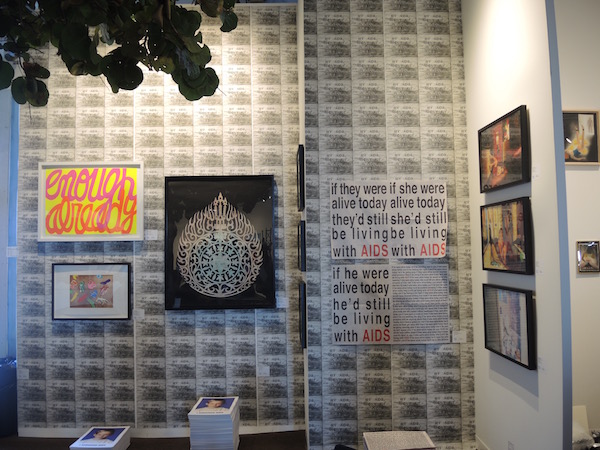
The Visual AIDS booth at PULSE.
Photo: Sarah Cascone.
Also of note is the photographic “sketchbook” by Ryan James MacFarland at Uprise NYC, replete with daily instantly developed photos that function as a visual diary. “The last one was actually taken yesterday,” the gallery’s Tessie Penin told artnet News of the images, which serve as studies for larger, fully realized photographs.
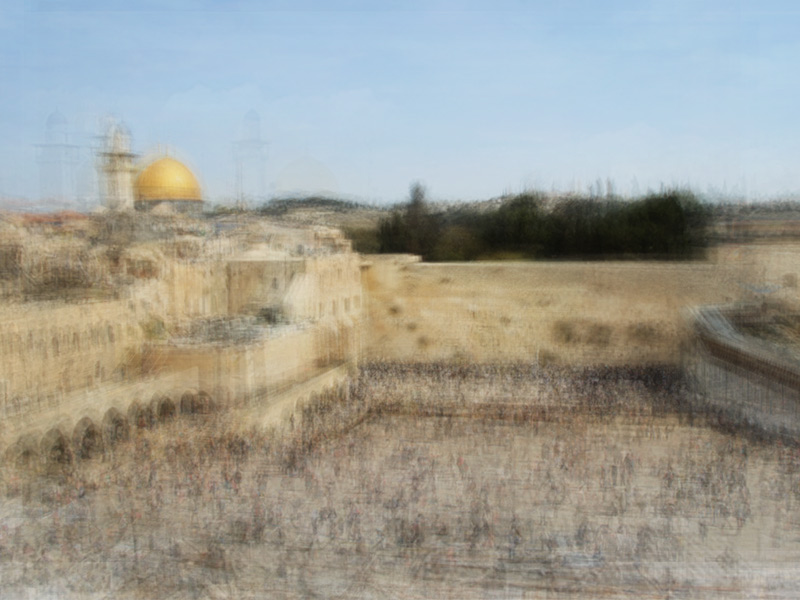
Corinne Vionnet, Jerusalem (2014), from the series “Photo Opportunities.”
Photo: courtesy Danzinger Gallery.
More striking photographic works can be seen at New York’s Danzinger Gallery, from Ian Ruhter and Corinne Vionnet. The former has converted a large van into what is probably the world’s largest tintype camera to produce the antique imagery in unprecedentedly-large scale, while the later has scoured the Internet for tourist photographs of major attractions, layering up to 100 nearly-identical views on top of each other.
“They end up looking kind of like watercolors,” gallery owner James Danzinger said of the finished products, which, in the case of sites like the Taj Mahal, can contain images from the earliest years of the history of photography through to the present day.
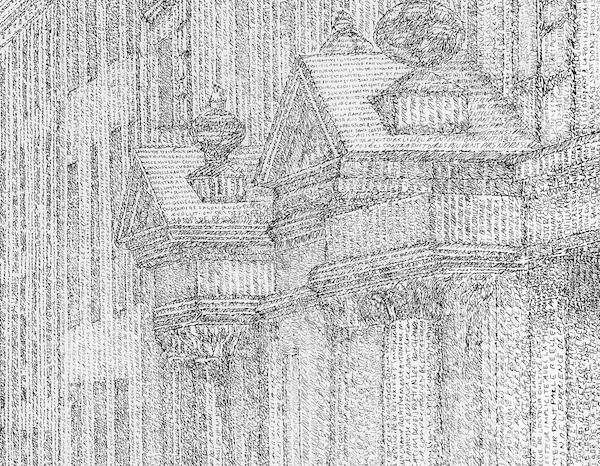
Michael Waugh, Les Regels De L’art (detail) at PULSE.
Photo: courtesy Von Lintel Gallery.
If you see only one thing at PULSE, however, be sure to stop and marvel at Michael Waugh‘s astonishing micrography at Von Lintel Gallery. Each work contains thousands upon thousands of handwritten words carefully arranged to create drawings based on 19th century newspaper imagery. The gallery actually has Waugh’s copy of the dense French philosophy book that provided the copy for his largest ever work, Les Regels De L’art. Thumb through it and be amazed by the obsessive perfectionism of the 14-foot-wide work, which took 18 months to complete.
SCOPE is on view at 1000 Ocean Drive, Miami Beach, December 1–6, 2015.
PULSE is on view at Indian Beach Park, 4601 Collins Avenue, December 1–5, 2015.